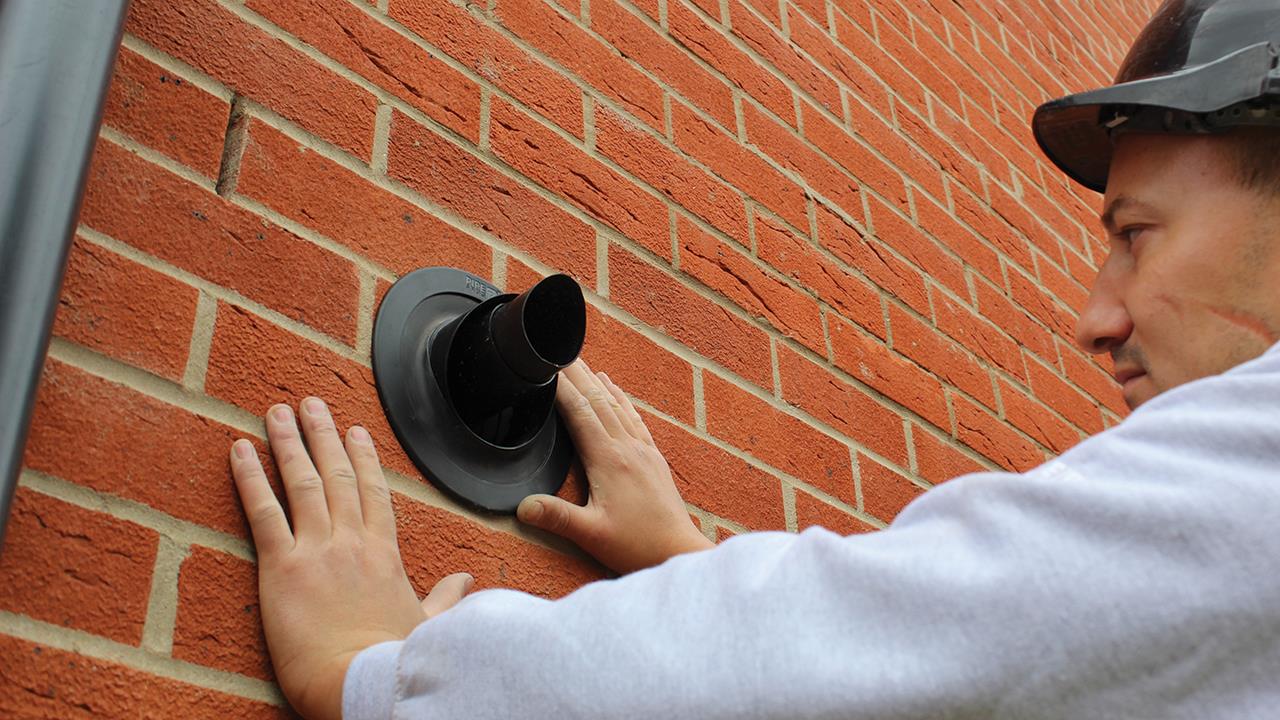

When it comes to plumbing and heating installations, functionality and reliability are paramount.
However, the importance of a professional finish around the pipework in a home should not be overlooked. The finishing touches to any installation can be the elements that the homeowner sees first and on which, rightly or wrongly, judges whether a job is well done or not.
Not only that, Part L of the Building Regulations now has requirements on sealing pipework penetrations in brickwork, primarily to encourage energy efficiency and to help meet the ambitions of the Future Home Standard. Heat loss can occur where pipework enters or exits a home, and so Part L now specifies the need for pipe seals and grommets on pipe penetrations in brickwork, and requires photographic evidence of compliance.
Consequently, from radiators and towel rails through to boiler flues and waste pipes, achieving a professional finish around pipework is important both aesthetically and for compliance.
The good news is these requirements from your customers and the regulations can be easily met, and professional finishes around different types of pipework can be achieved quickly and cost effectively.
Flues and waste pipes
As the National House Building Council has highlighted, two of the most common areas where air leakage is a problem are around service penetrations (i.e. pipework) and behind fitted units.
Holes are drilled through walls and floors to feed pipes out, for instance from a bathroom or kitchen, or to feed condensate pipes and flues outside from a boiler. It can be a messy job, and sealing around pipework and flues is normally carried out with mortar or sealant. This takes time and a lot of effort.
Mortar must be mixed up and can really only be used in dry weather. The finish mortar provides isn’t the best either, especially if the job is rushed. Although mortar is tough, it is not immune to weathering, and can crack and come away over time, leaving gaps open to insects, draughts, and water damage.
Similarly, silicone sealant can also weather, fall away, and doesn’t produce a smart finish. And while it is very important to make sure any holes left around a pipe in the brickwork or masonry are sealed properly, unfortunately, evidence shows that in some cases pipes extruding from buildings are just not being sealed at all.
Part L of the Building Regulations now requires pipe penetrations to be fitted with pipe seals and grommets that retain warm air inside homes and prevent cold air from entering, rather than traditional methods likes mortar or sealant.
The good news is there are products, like PipeSnug for example, that save time, money and effort for the installer yet still comply with the Part L requirements of an airtight seal, preventing heat loss, drafts, dampness, and pests.
Installed in seconds, internally or externally, they do away with the need for sealants, mortar, or expensive air sealing tape. They also create a neat, professional finish and eliminate the need for pointing.
Pipe seals like these cover any brickwork damage incurred during installation, and protect the building’s structure while simultaneously safeguarding the pipe from sharp brick edges. They also simplify the compliance verification process through photographic evidence, since these products don’t need additional tape or sealant and are easily recognisable and identifiable to Building Control.
Radiators and towel rails
Professional finishes around pipework applies to smaller pipes just as it does to larger ones, especially where homeowners could be looking at ugly pipework on a daily basis. You may install a radiator that is a seamless fit to the room and décor, but the pipework could be letting it down. You could get out the paint brush and paint it, hoping for the best, but over time the paint will begin to discolour, crack, and eventually flake off.
This is where products, such as Snappit rigid pipe finishing products, for example, come in. You can quickly and efficiently conceal unsightly pipework by simply cutting the pipe cover to size and snap it on. Then, to add the perfect finish, simply use the pipe collar supplied to create a seamless join. The products save installers time, are a mess-free alternative to painting, and, unlike paint, do not chip, flake, or discolour.
A professional finish around pipework is essential for compliance with regulatory standards and prevention of heat loss but it is also essential for customer satisfaction.
By using some simple but well-designed pipe covers and seals, plumbers and heating engineers can ensure a seamless, reliable, and visually appealing finish that meets both customer expectations and regulatory requirements.
If you'd like to keep up-to-date with the latest developments in the heating and plumbing industry, why not subscribe to our weekly newsletters? Just click the button below and you can ensure all the latest industry news and new product information lands in your inbox every week.